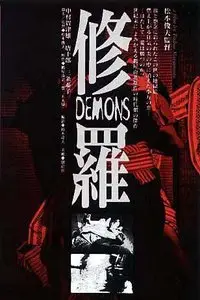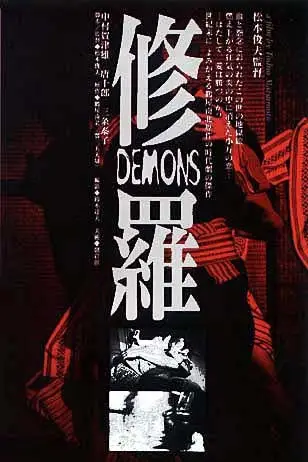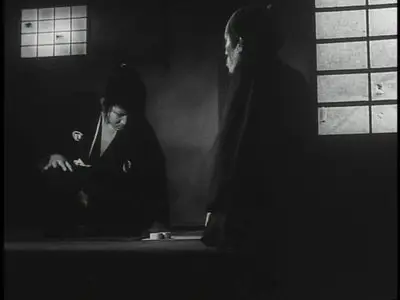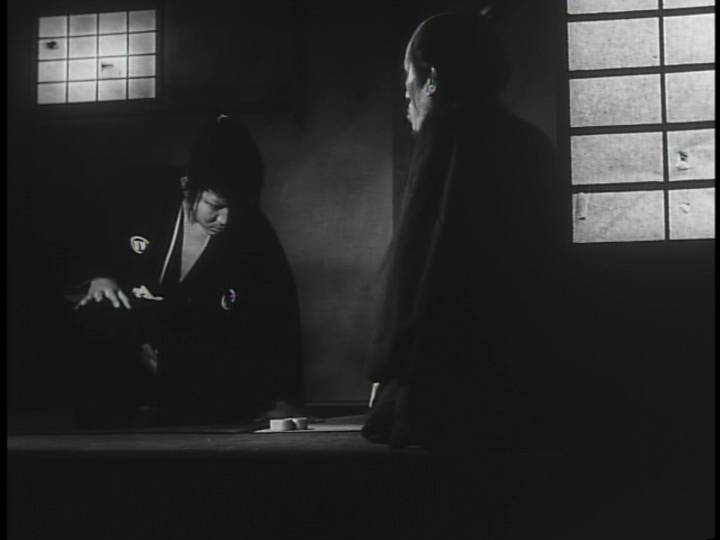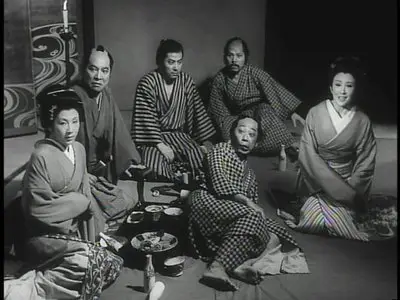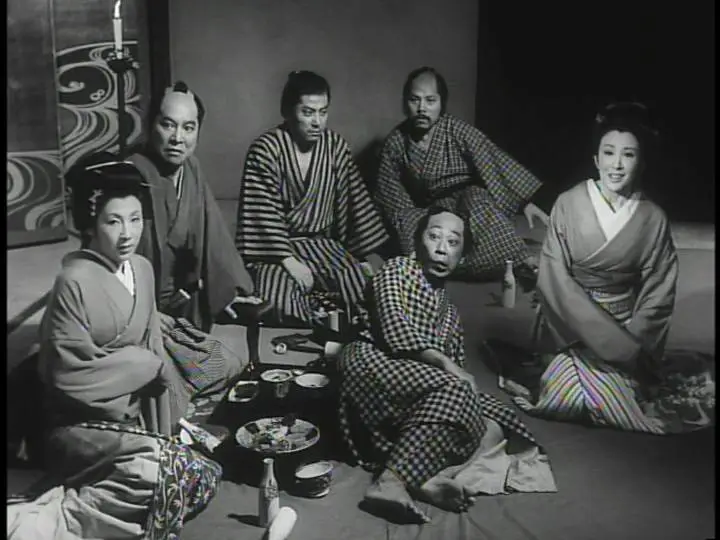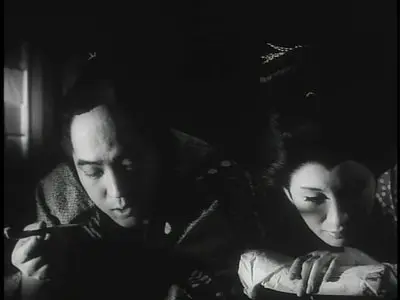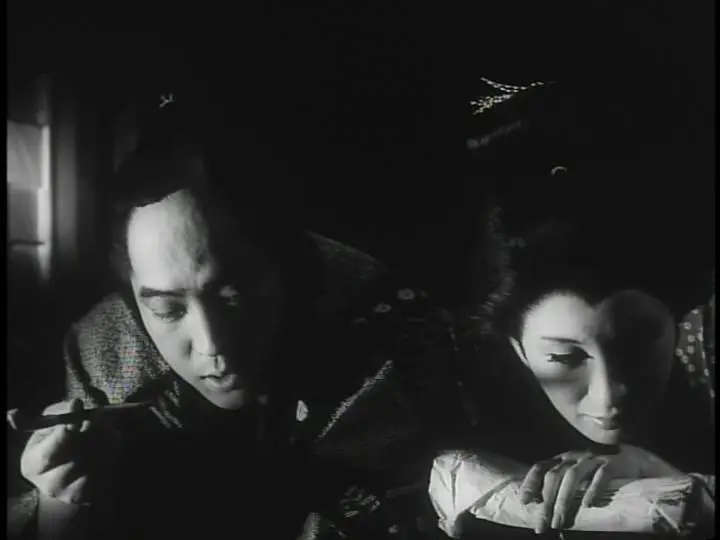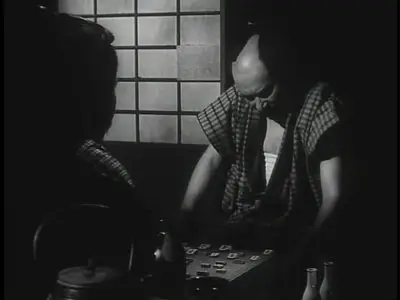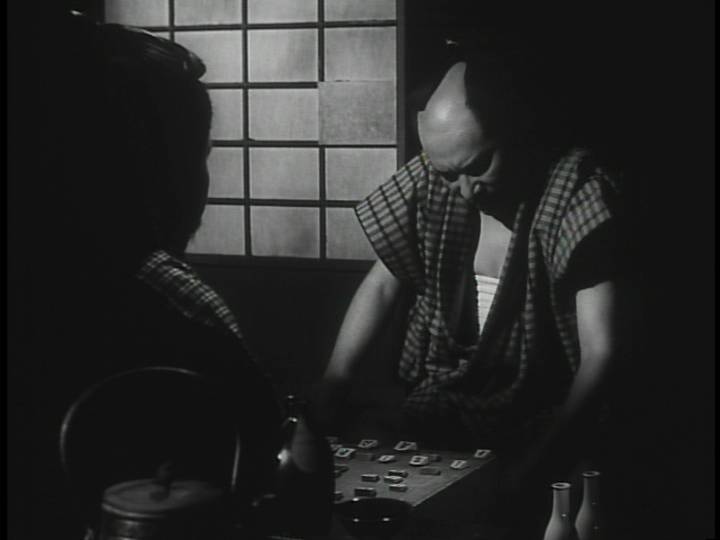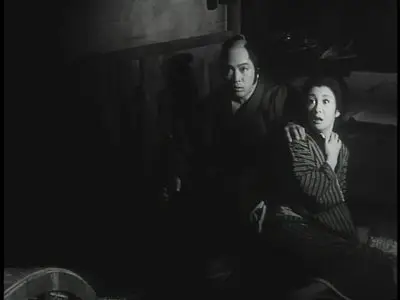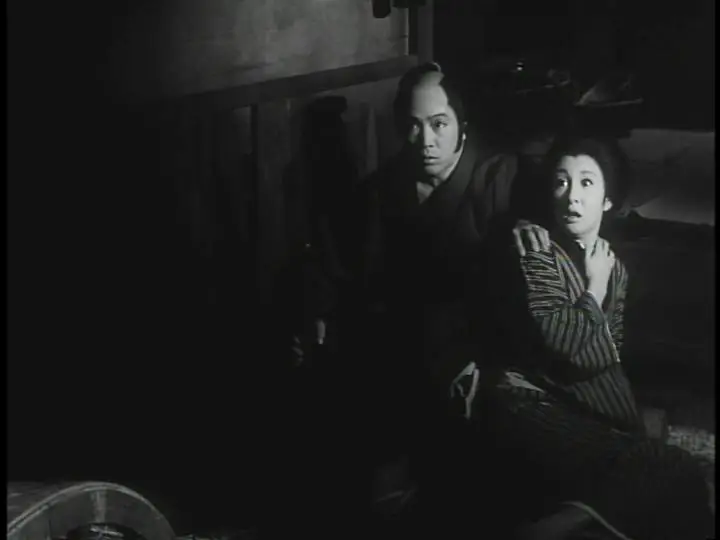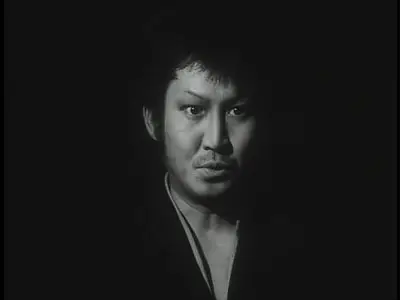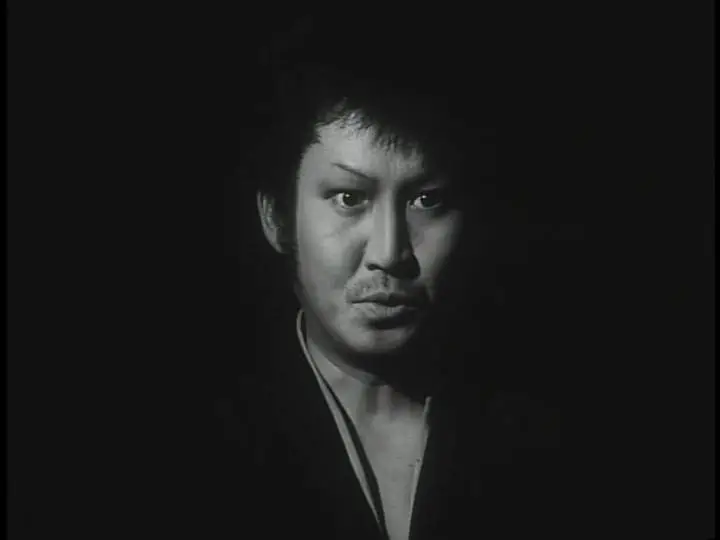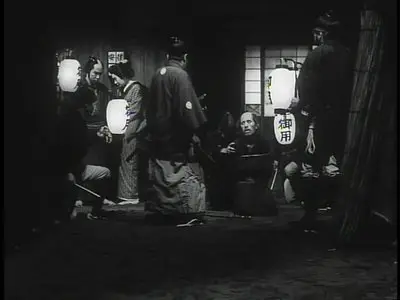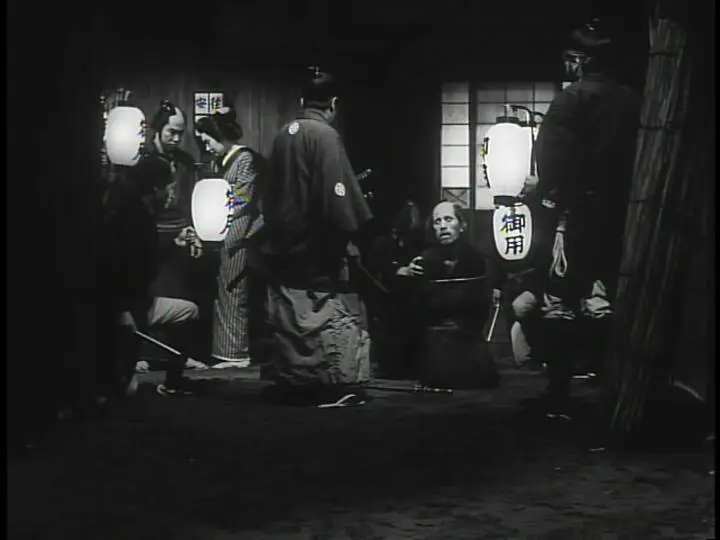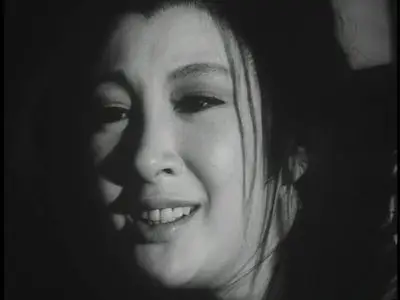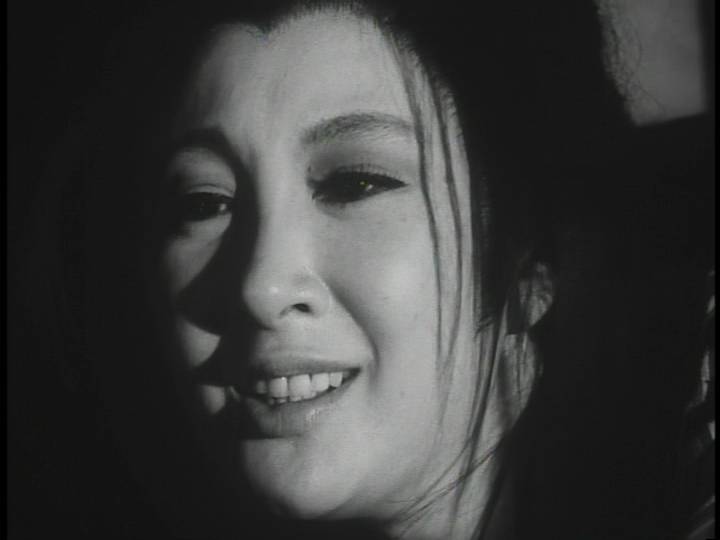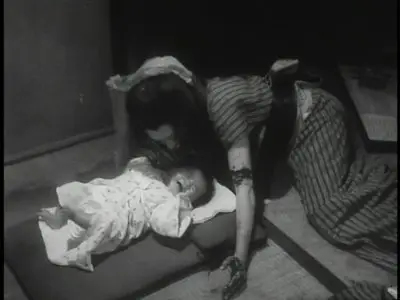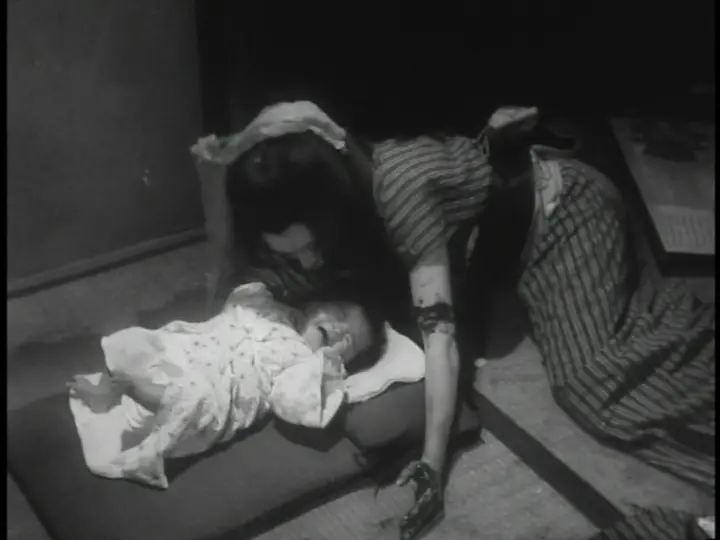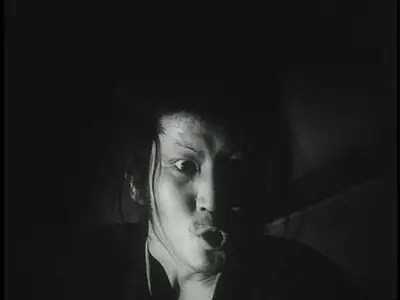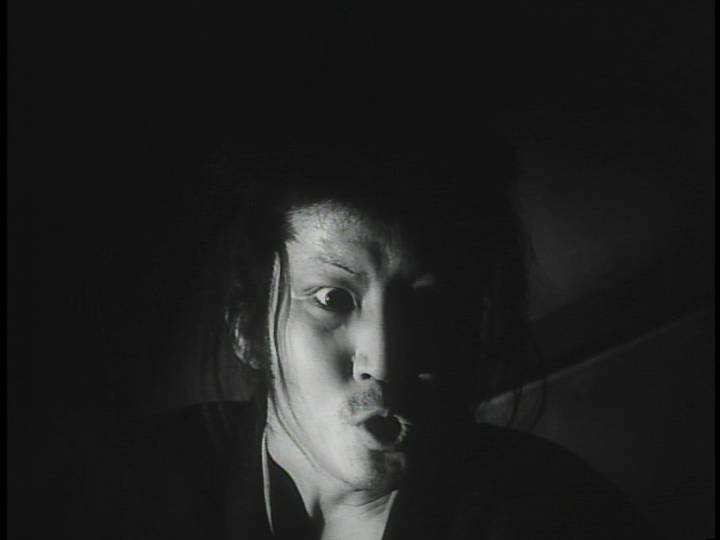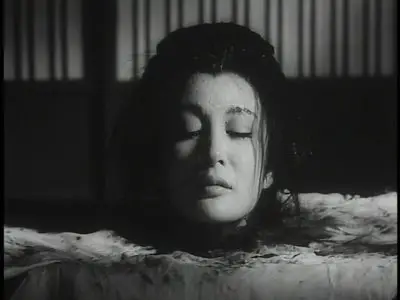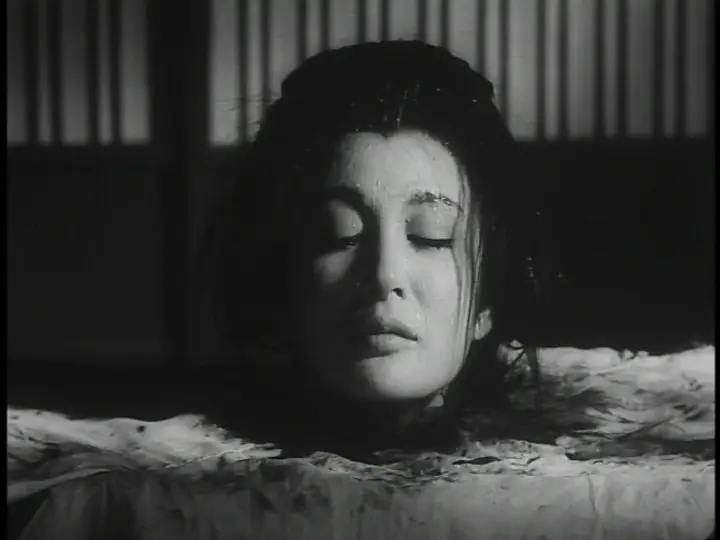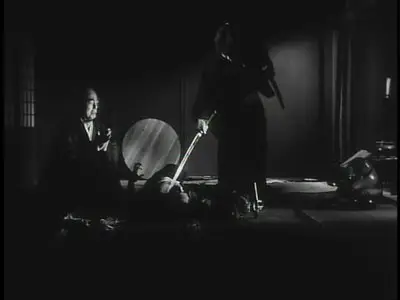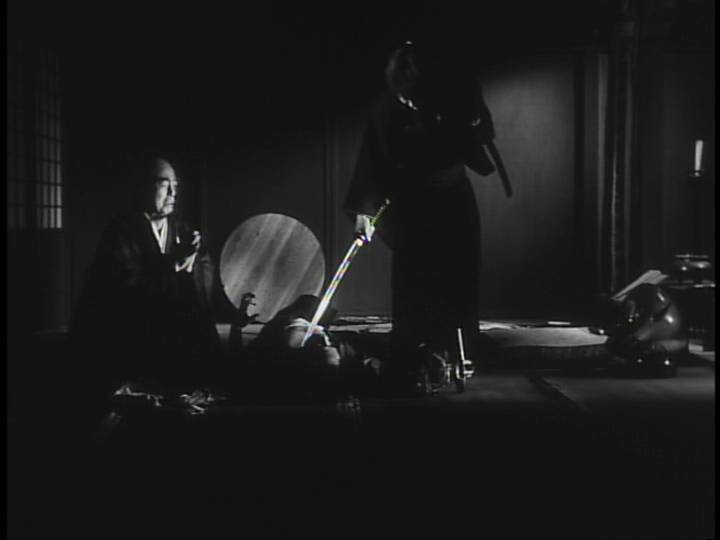Shura / Demons (1971)
A Film by Toshio Matsumoto
DVD9 Custom | VIDEO_TS | NTSC 4:3 (720x480) | 02:13:44 | 7,94 Gb
Audio: Japanese AC3 2.0 @ 384 Kbps | Subs: English, Russian (custom added)
Genre: Drama, Art-house | Japan
A Film by Toshio Matsumoto
DVD9 Custom | VIDEO_TS | NTSC 4:3 (720x480) | 02:13:44 | 7,94 Gb
Audio: Japanese AC3 2.0 @ 384 Kbps | Subs: English, Russian (custom added)
Genre: Drama, Art-house | Japan
Appearing at first like a standard samurai movie, this Japanese film is a tragic drama with overtones from Japan's classic theaters: Kabuki and Noh. Indeed, the protagonist's unwitting self-destruction resembles that of Oedipus in Greek drama. Gengo (Katsuo Nakamura) is a ronin, a samurai-for-hire, which, according to the samurai ethic, is no kind of human being at all. He spends some time with a courtesan (a kind of countrified geisha, not a prostitute) and the courtesan and her husband rob him. In seeking retaliation, he wreaks havoc in their community, kills the courtesan, and drives her husband to suicide. But all is not as it appears to be. Gengo is a deposed nobleman, and the courtesan, unaware of his identity, was a supporter of his cause. In robbing the anonymous ronin, she was continuing her campaign to raise money to make possible the nobleman's reinstatement. In killing his supporters in this way, Gengo has violated the deepest ethics of feudal lordship.
IMDB
Also known As: Pandemonium (1971)
Toshio Matsumoto’s unique and brilliant samurai film, Shura, opens with a shot of the setting sun. This is the only color shot in the film’s entirety, and our last view of any daylight. The rest of the film resides in the dark, shadowy world of Edo at night. Shura was made in 1971, late in the samurai film era, starring Katsuo Nakamura, the brother of the more famous Kinnosuke Nakamura.
The most horrific samurai films I’ve ever had the pleasure to view, Shura tells the story of the 48th ronin, using the traditionally heroic revenge story of the 47 ronin as a counterpoint to the fall from grace of our protagonist Gengobe. As an ex-member of the Asano clan, Gengobe has been a ronin for a few years and it has strongly affected his financial situation. Having sold all his furniture, Gengobe is biding his time waiting for the ex-Asano ronin’s vendetta to come to fruition. One of his servants visits Gengobe, having scrapped together the 100 ryo necessary for him to participate in the glorious revenge! Not helping matters, he has fallen in love with a geisha, Komon, who needs exactly 100 ryo to free herself from debt. This presents Gengobe with a giri-ninjo dilemma, forcing him to make a very tough decision.
The film works very similarly to film noir, nearly every character forced into compromised positions. We initially identify with Gengobe, but as he is pushed into increasingly unfavorable positions, we can only watch as he slowly loses his sanity. Shura is brilliantly plotted, continually taking unexpected twists while it delves deeper and deeper into darkness. To spoil more would greatly affect anyone viewing this film for the first time, but the Kabuki source material supplies plenty of twists and turns.
Matsumoto only directed four feature films, most famously Funeral Parade of Roses, and was extremely experimental in his film form. In Shura, he shows several alternate realities/fantasies of events before showing the actual events which keeps the audience off-balance. Also contributing to the audience’s disorientation, Matsumoto will show the same action over and over, oftentimes from different angles. These stylistic touches give Shura a surreal, doomful quality that is rarely seen in samurai films.
Matsumoto, who also has a strong background in photography, has an eye for beautifully gloomy images. Nearly every shot is infested with dark blacks engulfing the screen and the expressionistic photography constantly filled with looming character’s shadows, contributing to the doom-filled atmosphere. While the source material creates a very stage-like feel, Matsumoto’s stylistic, cinematic touches create a fusion between stage and cinema that is much more than a standard kabuki adaptation.
More than almost every samuari film, revenge and violence are not glorified. Matsumoto is deliberate in his approach, stabs and thrusts occur in slow motion, characters spewing out syrupy, black blood. Hypnotically horrific, there is nothing heroic about the numerous killings in this film.
Under lesser hands, Shura could’ve easily come across as gimmicky. Under Matsumoto’s capable hands nothing ever feels forced and we are treated to something truly extraordinary. Along with Goyokin and Seven Samurai, Shura is one of my favorite samurai films. Unlike the former two which I fully expected to like, Shura completely took me by the surprise. Watching it on a whim, my initial viewing of Shura was awe-inspiring. Since then, I’ve viewed Shura twice more with friends and my appreciation of the film has only increased. For any adventurous cinephiles, a must see.
Gengobe Satsuma, an exiled samurai cast out as an Asano clan retainer is given a second chance to join his brothers in arms to become the 48th Ronin against the Shogunate. His faithful servant gathers the 100 ryo required for his acceptance. Gengobe is also in love with a greedy geisha named Koman. About to be sold to another man, Gengobe learns that for him to keep her, her debt is exactly 100 ryo.
Matsumoto Toshio's seldom discussed haunting and horrific Jidai Geki is an alternate take on the famous Japanese true story of the '47 Ronin' and their plight to avenge the death of the ritual suicide of their leader, Asano Takumi. Beautifully shot in stark B/W, Matsumoto's vision of a decrepit world filled with unscrupulous, weak minded individuals is simply one of the most brutal motion pictures ever made. The violence, although infrequent, is strong and escalates in the extreme by the end which resulted in the picture being banned in some territories.
Possessing but a single shot in color, this brief moment of the sun descending foreshadows the darkness ahead and as the film progresses, the surroundings appear to get darker and darker as the picture gets closer to its conclusion. Tatsuo Suzuki's cinematography deserves the utmost praise in capturing one of the gloomiest, most depressing visual palette's ever conceived. The film is shot in such a way, that the viewer is sometimes placed inside the head of Gengobe–we live the many deceptions, lies and utter carelessness he endures, or brings about onto himself. We share in his continued downward spiral into the blackness of hell's pit, but we can only watch as he descends further into madness, brought on by his blind love for a woman and his forsaking of duty.
Another gloomy attribute is that no one individual survives unscathed–guilty or not. After introducing several characters seemingly bereft of any and all humanistic traits whatsoever, Matsumoto pulls the rug out from under us. The director strangles his audience with a breathless irony that sweeps the viewer into a pestilent portrait of despair even more hopeless than the previous brushstroke of black morbidity. This surrealist nightmare shall remain embedded in your brain some time after total darkness has embraced the final shot of the film.
Special Features:
(all in Japanese without subtitles)
- Audio Commentary
- Trailer
- 14 min Interview with director Matsumoto Toshio
- Biographies
- Poster art
- Movie set plans
No More Mirrors.


